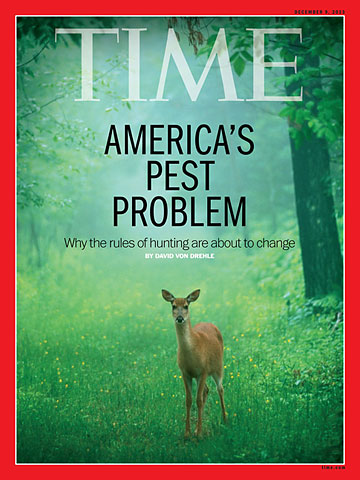
Faced with an outbreak of lyme disease and rising deer-related car accidents, the city council of Durham, N.C., authorized bow hunting inside city limits in November. Authorities in San Jose, Calif., in the heart of Silicon Valley, voted to allow hunting wild pigs within that city in October. Rock Island, Ill., one of the five Quad Cities on the Mississippi River, recently approved bow hunting in town, provided that it occurs in green spaces golf courses, parks, cemeteries or on private land.
Across the country, hunting is poised for a comeback, and not just because the folks on Duck Dynasty make it look like so much fun. We have too many wild animals from swine to swans. Whether you're a Walmart employee in Florida wondering what to do with the alligator at your door, a New Yorker with a hawk nesting on your high-rise or an Ohio golfer scattering a flock of Canada geese, you now live, work and play in closer proximity to untamed fauna than any other generation of Americans in more than a century.
Too many deer, wild pigs, raccoons and beavers can be almost as bad for the animals as too few. This is why communities across the country find themselves forced to grapple with a conundrum. The same environmental sensitivity that brought Bambi back from the brink over the last century now makes it painfully controversial to do what experts say must be done: a bunch of these critters need to be killed.

